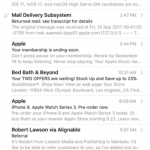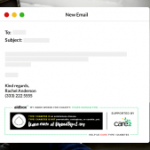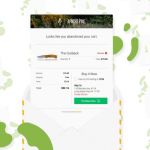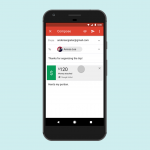Here’s how the presidential email campaigns are shaping up
Email provider Return Path employed data from a 2.5-million user panel to figure out who is winning this marketing channel.

There is now data to confirm that Donald Trump’s is the smallest.
Email list size, that is.
That’s according to email marketing and data provider Return Path, based on its opt-in panel of more than 2.5 million email recipients. This week, the company launched a website based on this data, called Email for President.
It looks at the email campaigns of the three remaining presidential candidates — Donald Trump, Hillary Clinton and Bernie Sanders. Users can select and compare email list size, emails opens, deletes without opening, spam rate and marked as spam. The resulting graphs are measured against industry benchmarks. The site will be updated with other features throughout the campaign, such as emails relating to the chosen vice presidential candidates.
In the case of email list size, Sanders’ is about 5.5 times larger than Trump’s, while Clinton’s is about 5.3 times larger. Return Path Senior Director of Research Tom Sather told me that Clinton’s list size had a considerable lead until February, when Sanders gained a small advantage. Since May 3, Sanders’ list size has decreased by one percent, while Hillary’s has gone down nine percent and Trump’s three percent.
Sather pointed out that email operations are not just nice-to-have promotions, given that Barack Obama’s campaign raised about half a billion dollars from email during the 2012 election.
Sather also noted that the wealthy Trump has boasted throughout the primaries that he was self-funding. Now, he’s abandoned that and is looking for contributions, so the size of his list matters.
But Trump’s email effort lags behind the other two. Sather said Trump’s segmentation has only been geographical and oriented toward getting people to local events or debate tune-in, while Clinton’s and Sanders’ have been about both events and fundraising.
He described Clinton’s and Sanders’ email efforts as “both [being] really good.” Clinton’s campaign, he said, sends more emails, and there is “better segmentation” of users by response or behavior, while Sanders — whose effort last year was “not very sophisticated” — has begun to catch up.
Trump also conducts a lot fewer campaigns. For instance, there were only 16 so far in May. By contrast, Clinton has sent 346, many of which are to segments of users, compared to Sanders’ 140. Trump’s subject lines are also, surprisingly, fairly even-keeled, he said, such as “Don’t miss out” or “Join us tomorrow,” while Clinton’s and Sanders are more focused on getting readers’ attention with something like: “Trump could become president.”
Nevertheless, Trump’s open rates are higher, with Sanders’ and Clinton’s about half Trump’s this month. Trump’s open rates are dropping somewhat, going from 21 percent in March to 18 percent in May. Sather speculates the open rate might be higher for the Trump campaign because he sends fewer emails or, perhaps, because the readers are more curious about what he might say or more passionate about his candidacy.
Clinton has a very high reach of actually getting into recipients’ inboxes and not being stopped by, say, spam filters. Her emails reach an impressive 96 percent of their targeted inboxes, which Sather described as “excellent,” given that the benchmark rate is about 79 percent. Sanders’ is 83 percent, while Trump’s is 84 percent.
The reason? Sather said Clinton “has a much more sophisticated campaign” than the other two, such as the highly targeted segments. In fact, in the metric of complaint rates — that is, the percentage of emails that recipients report as spam — Clinton’s is a perfect 0 percent in May, while Sanders is close behind at .2 percent. Trump’s is 9.4 percent, which, Sather said, could be because his campaign is buying lists rather than growing them organically.
But Sanders’ subscribers are much less likely than the other two to delete without opening.
Users become part of Return Path’s panel when they download one of the free email-related apps or browser-plugins from Return Path at OtherInbox.com. Using the apps and plug-ins means agreeing that anonymized data about your email habits can be sent to Return Path, which updates its data daily and maintains a 30-day average.
Sather said the “vast majority of the panel” is in the US and is demographically diverse, although they obviously own a computer or a smartphone.
(Some images used under license from Shutterstock.com.)
Marketing Land – Internet Marketing News, Strategies & Tips
(27)















